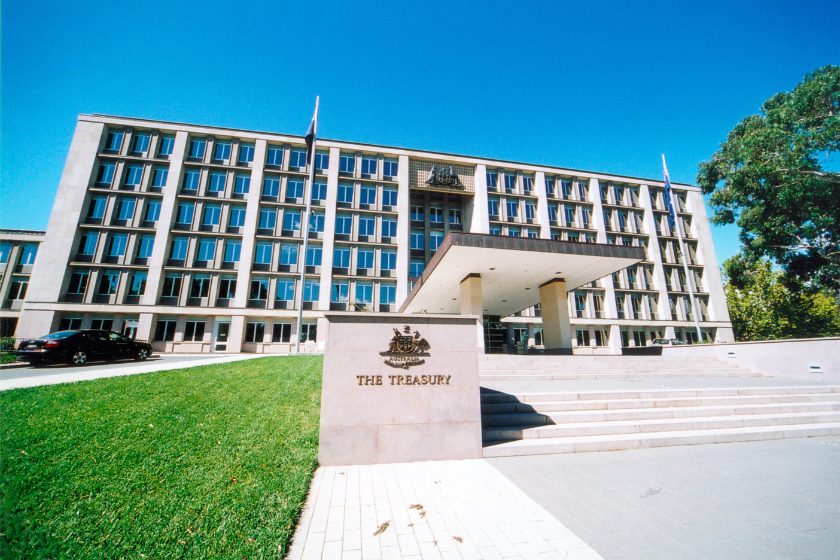It was while cleaning out the garage of my 1960s suburban home that my partner and I made an interesting discovery recently. Tucked under a board sitting atop the old timber workbench was a partial copy of The Sydney Morning Herald — dated Wednesday, 19 April 1972. Some 47 years ago.
And the top page facing us was the job classifieds — yes, Gen Zers, job ads used to be published in print newspapers; this was well before the days of readily available internet.
In modern Australia, with complex protections against discrimination, including on the basis of age and gender, it is hard to imagine that employers were ever allowed to dictate suitability for job vacancies on anything other than skills, qualifications and levels of experience.
But that was exactly what employers in 1972 were able to do — and they did — from local small businesses right through to corporate Australia and even government agencies.
That’s because discrimination based on various factors, both in employment and more broadly, has only been progressively banned at a federal level in the decades since. It started with the Racial Discrimination Act in 1975, which was followed by the Sex Discrimination Act in 1984, the Disability Discrimination Act in 1992 and the Age Discrimination Act in 2004.
Gender segregation
The job ads in the paper were clearly segregated on the basis of gender, with the positions vacant columns split between “Men and boys” and “Women and girls”.
Financial and trades roles dominated those advertisements listed for males, while administrative and clerical, as well as machinists (seamstresses and clothing alterations), dominated those for females.
As an example, a KFC outlet in Sydney’s Artarmon, going by its original name of Kentucky Fried Chicken, stated that it was on the lookout for “men and boys for positions as cooks”.
Even government agencies adhered to the gender segregation of vacancies, such as the “Public Service of South Australia” listing an ad in the men and boys section for a tourist officer.
The paper did have an all-inclusive section under the heading “Men or women (General)”, but this was sparsely used compared with the segregated sections.
Perhaps the most controversial ad among the brittle pages came from a company called Manor Insurances Australasia Limited. In its search for a sales telephonist, it started with, “WANTED: Women who like to spend their time all day speaking to important men”.
Age stipulation
While modern employers still face accusations of being ageist in their hiring practices, particularly with complaints of discrimination against older workers, in 1972 age was a major trait that dictated the likelihood of employment in a particular field.
For instance, Royal Prince Alfred Hospital had an ad listed for “a young lady to 35 years of age” to work as an invoice clerk.
Meanwhile, the Commonwealth government said in an ad for typists that permanent appointments were only available for people “under 45 and a British subject eligible for permanent residence in Australia”.
Age requirements could also differ according to the sexes, as one from a Phoenix Insurance Group demonstrated. It posted a slightly tweaked version of the same ad for two senior claims clerks under each of the gender-specific columns.
Yet while it admitted to “seeking the services of 2 young men, approximately 22–30 years of age”, for the same roles, it was seeking “2 women approximately 22–35 years of age”.
Personality, physical appearance
Some employers even outlined personal traits they desired among job candidates. A personality that was “pleasant”, “positive” or “nice” was stipulated in a number of the classifieds.
And at least one ad directly referenced a woman’s physical appearance as part of its eligibility criteria. Inventum said that it was inviting applications “if you’re attractive, can type and [are] willing to work at a hectic pace”.
Salaries that seem unfathomable now
Of course, inflation has changed the cost of living, and with it typical rates of pay, over the years. Nevertheless, the salaries advertised in 1972 seem unfathomable looking back from 2019.
If you were interested in working as a typist for Sydney University’s Department of Chemical Engineering, for example, you could expect a salary of “up to $3,640 per annum”.
The previously mentioned tourist officer role in South Australia, meanwhile, advertised “salary limits” of “$2,010–$4,350 per annum”.
Other perks
Even some of the perks and benefits spruiked by employers of the day are at odds with what is offered, and expected, in the modern workforce.
A “B Grade” journalist role, listed under the men and boys section by an unnamed South Coast newspaper, came with “accommodation available” — something virtually unheard of, at least for non-essential public personnel or those working in remote areas in mining or agriculture, in 2019.
Not everything was so vastly different though. Many, particularly government and corporate vacancies, included three to four weeks of annual or “leisure” leave, as well as superannuation and up to two weeks of sick leave.
But I really doubt that any female jobseeker of the modern age could look past the obvious stereotype of being offered a “half-day shopping time per month” — as advertised by Austral Bronze Crane Copper — unless, at least, it was offered to their male colleagues, too.







